Many of you are familiar with Meyers Gazetteer – a free online database consisting of over 200,000 villages, towns and cities in pre-World War I Germany (so yes, if your ancestor’s town was in present-day Poland or France, it will be there!) But are you getting everything out of it that you can? Below, find six things you may not know about Meyers Gaz!
1. The Wildcard Feature
Most of you likely know this feature, but I wanted to include it just in case. Stuck deciphering your handwritten town word? If you know that the word on your document is a place name, but can only recognize a few of the letters, type these letters into the site’s search engine, simply using an asterisk for the letters you don’t recognize. Meyers Gazetteer will then provide you with a list of all possible places with your letter combination.
Too many results? Go to the “filter results by region” button and choose the state where your town is located. This should narrow the list significantly!
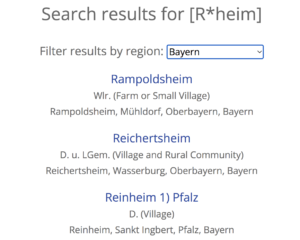
2. The Sounds-Like Feature
This is an amazing tool of MeyersGaz! Remember how we always talk about how our German ancestors and scribes misspelled words? This occurred with towns as well. If you are certain of your transcription, but are not getting any results, click on the “Try viewing ‘sounds like’ search results”, as seen in the image below. This will give you a list of what other possibilities your town could be!

3. The Historical Map
This is my favorite feature of MeyersGaz. Once you are on the entry, click on the map to the left. It will then toggle to the historical map. If you know your town is near Rosenheim, for example, but it’s not Rosenheim itself, you can drag the map around to see what other towns are nearby. Compare these to your handwritten word, and see if one is a match! (Hint: You can do this with modern Google maps as well, but with genealogy, you sometimes have better luck with the historical versions).
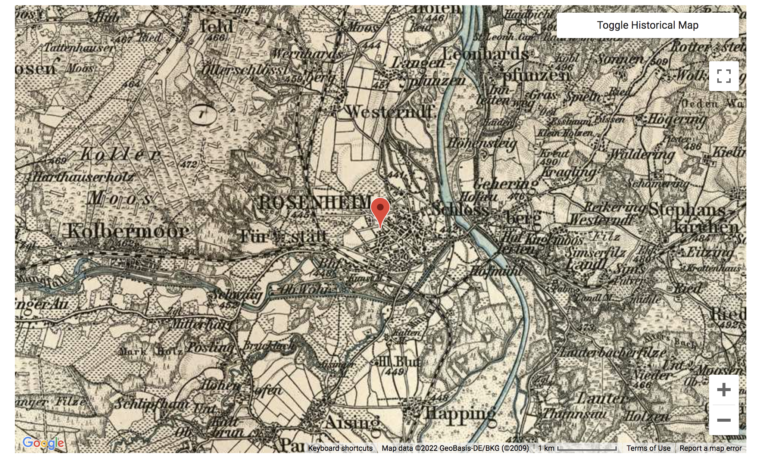
4. Map Extras
If you are on the historical map, and then click, “Toggle Historical Map” in the upper righthand corner, you can click various menu items – such as “Catholic Churches” and pins will appear in the area showing the nearby churches. You can then click on the pin itself to find out more information. So helpful!
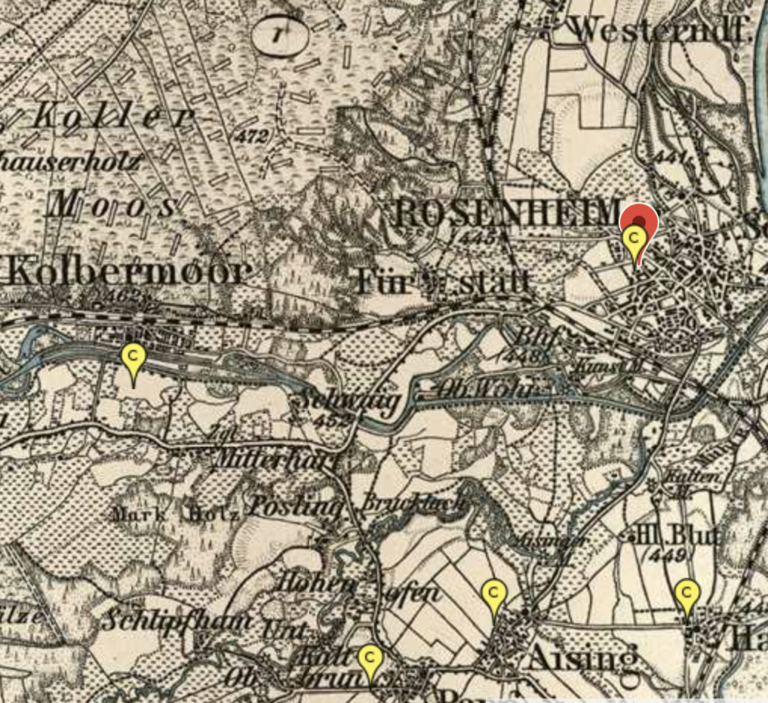
5. The Ecclesiastical Feature
If you click on the ecclesiastical tab, you can see a list of Catholic, Protestant, and Jewish churches in the area around your town. This includes the parishes within a 20-mile radius, so can be very helpful if you are looking for any other churches nearby.
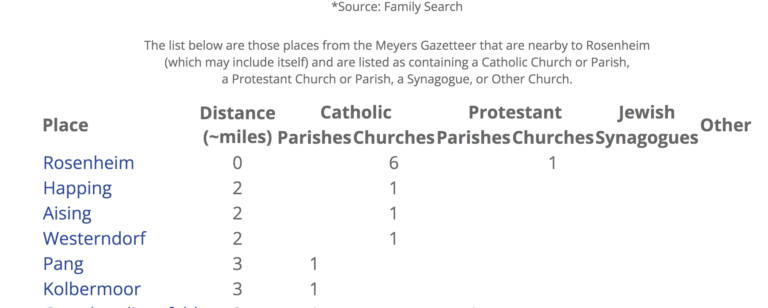
6. The Related Tab
This is extremely helpful for transcribing. If you know your document comes from Rosenheim, but there is a different town listed in a column of your record, click the related tab for Rosenheim. This tab lists other towns that are under the jurisdiction of the larger town (Roseheim), so may be a clue for finding your smaller town (if that is truly what it is) listed in that column. I’ve used this many times to decipher a mystery word!
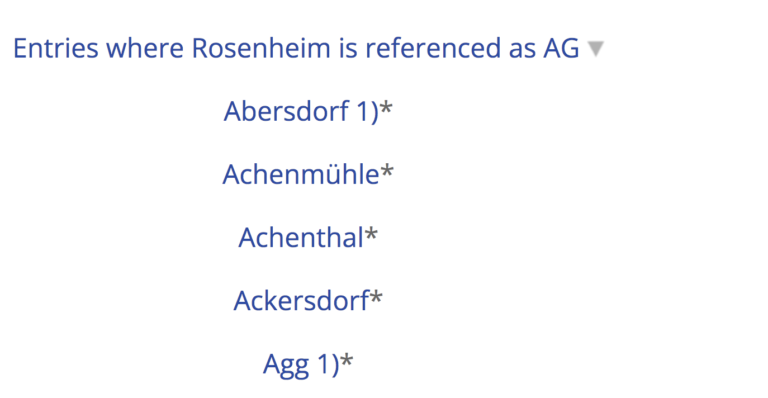

5 Responses
Thank you for showing us this informtion. I don’t have any German ancestors, however, when helping my brother-in-law learn more about his father, I discovered he does. They emigrated from Germany to Maine in the early 1800s. I am trying to learn as much as I can to be able to learn more about his ancestry. Again, thank you. This is very helpful.
Thanks a lot for the extra help.
My relatives came from Glandorf, Germany. Some still live there, a distant cousin is the mayor and visited last year. All so interesting. This town was not occupied by Hitler, probably because it was just a farm/country village.
Looking for Zeidler /Zajdler / Zajdel / Zaydler / Seidler , Sala , Wolf / Wilk / Wilkonski , Jelonek , Kulinski . Kucharska ,Maka
Believed to have moved to Southern Poland , Malopolskie Galicia and left before WW1.
Very useful information but I don’t have Germany ancestory. I wish I did!